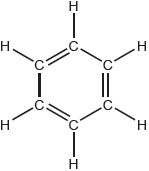| Date | May 2022 | Marks available | 1 | Reference code | 22M.2.sl.TZ1.3 |
| Level | SL | Paper | 2 | Time zone | TZ1 |
| Command term | Draw | Question number | 3 | Adapted from | N/A |
Question
Magnesium is a reactive metal often found in alloys.
Organomagnesium compounds can react with carbonyl compounds. One overall equation is:
Compound B can also be prepared by reacting an alkene with water.
Iodomethane is used to prepare CH3Mg. It can also be converted into methanol:
CH3 + HO– → CH3OH + –
Magnesium can be produced by the electrolysis of molten magnesium chloride.
Write the half-equation for the formation of magnesium.
Suggest an experiment that shows that magnesium is more reactive than zinc, giving the observation that would confirm this.
State the name of Compound A, applying International Union of Pure and Applied Chemistry (IUPAC) rules.
Identify the strongest force between the molecules of Compound B.
Draw the structural formula of the alkene required.
Deduce the structural formula of the repeating unit of the polymer formed from this alkene.
Deduce what would be observed when Compound B is warmed with acidified aqueous potassium dichromate (VI).
Identify the type of reaction.
Outline the requirements for a collision between reactants to yield products.
The polarity of the carbon–halogen bond, C–X, facilitates attack by HO–.
Outline, giving a reason, how the bond polarity changes going down group 17.
Markscheme
Mg2+ + 2 e- → Mg ✔
Do not penalize missing charge on electron.
Accept equation with equilibrium arrows.
Alternative 1
put Mg in Zn2+(aq) ✔
Zn/«black» layer forms «on surface of Mg» ✔
Award [1 max] for “no reaction when Zn placed in Mg2+(aq)”.
Alternative 2
place both metals in acid ✔
bubbles evolve more rapidly from Mg
OR
Mg dissolves faster ✔
Alternative 3
construct a cell with Mg and Zn electrodes ✔
bulb lights up
OR
shows (+) voltage
OR
size/mass of Mg(s) decreases «over time»
OR
size/mass of Zn increases «over time»
Accept “electrons flow from Mg to Zn”.
Accept Mg is negative electrode/anode
OR
Zn is positive electrode/cathode
Accept other correct methods.
propanone ✔
Accept 2-propanone and propan-2-one.
hydrogen bonds ✔
Do not penalize missing brackets or n.
Do not award mark if continuation bonds are not shown.
no change «in colour/appearance/solution» ✔
«nucleophilic» substitution
OR
SN2 ✔
Accept “hydrolysis”.
Accept SN1
energy/E ≥ activation energy/Ea ✔
correct orientation «of reacting particles»
OR
correct geometry «of reacting particles» ✔
decreases/less polar AND electronegativity «of the halogen» decreases ✔
Accept “decreases” AND a correct comparison of the electronegativity of two halogens.
Accept “decreases” AND “attraction for valence electrons decreases”.
Examiners report
Unfortunately, only 40% of the students could write this quite straightforward half equation.
Many candidates gained some credit by suggesting voltaic cell or a displacement reaction, but most could not gain the second mark and the reason was often a failure to be able to differentiate between "what occurs" and "what is observed".
Even though superfluous numbers (2-propanone, propan-2-one) were overlooked, only about half of the students could correctly name this simple molecule.
Probably just over half the students correctly identified hydrogen bonding, with dipole-dipole being the most common wrong answer, though a significant number identified an intramolecular bond.
Few candidates could correctly eliminate water to deduce the identity of the required reactant.
Correct answers to this were very scarce and even when candidates had an incorrect alkene for the previous part, they were unable to score an ECF mark, by deducing the formula of the polymer it would produce.
Some students deduced that, as it was a tertiary alcohol, there would be no reaction, but almost all were lucky that this was accepted as well as the correct observation - "it would remain orange".
About a quarter of the students identified this as a substitution reaction, though quite a number then lost the mark by incorrectly stating it was either "free radical" or "electrophilic". A very common wrong answer was "displacement" or "single displacement" and this makes one wonder whether this terminology is being taught instead of substitution
Generally well done with the vast majority of students correctly citing "correct orientation" and many only failed to gain the second mark through failing to equate the energy required to the activation energy.
Another question that was not well answered with probably only a quarter of candidates stating that the polarity would decrease because of decreasing electronegativity down the group.




